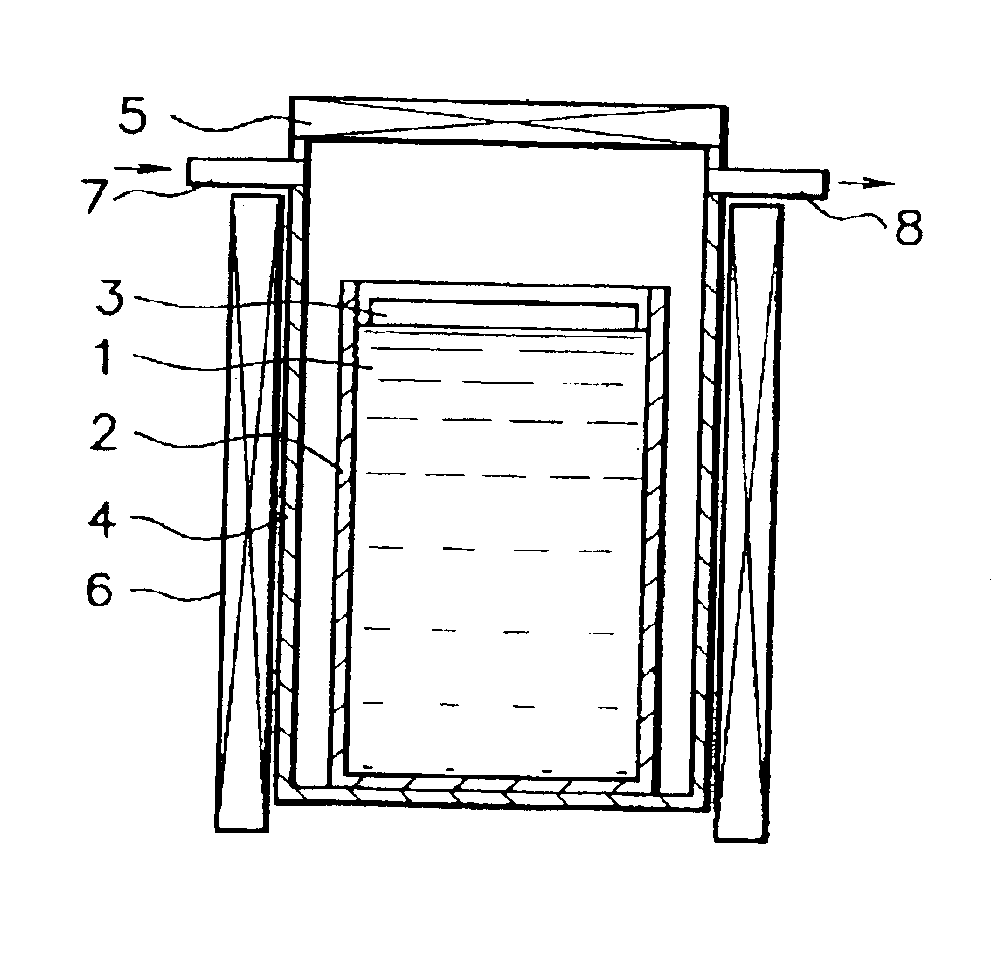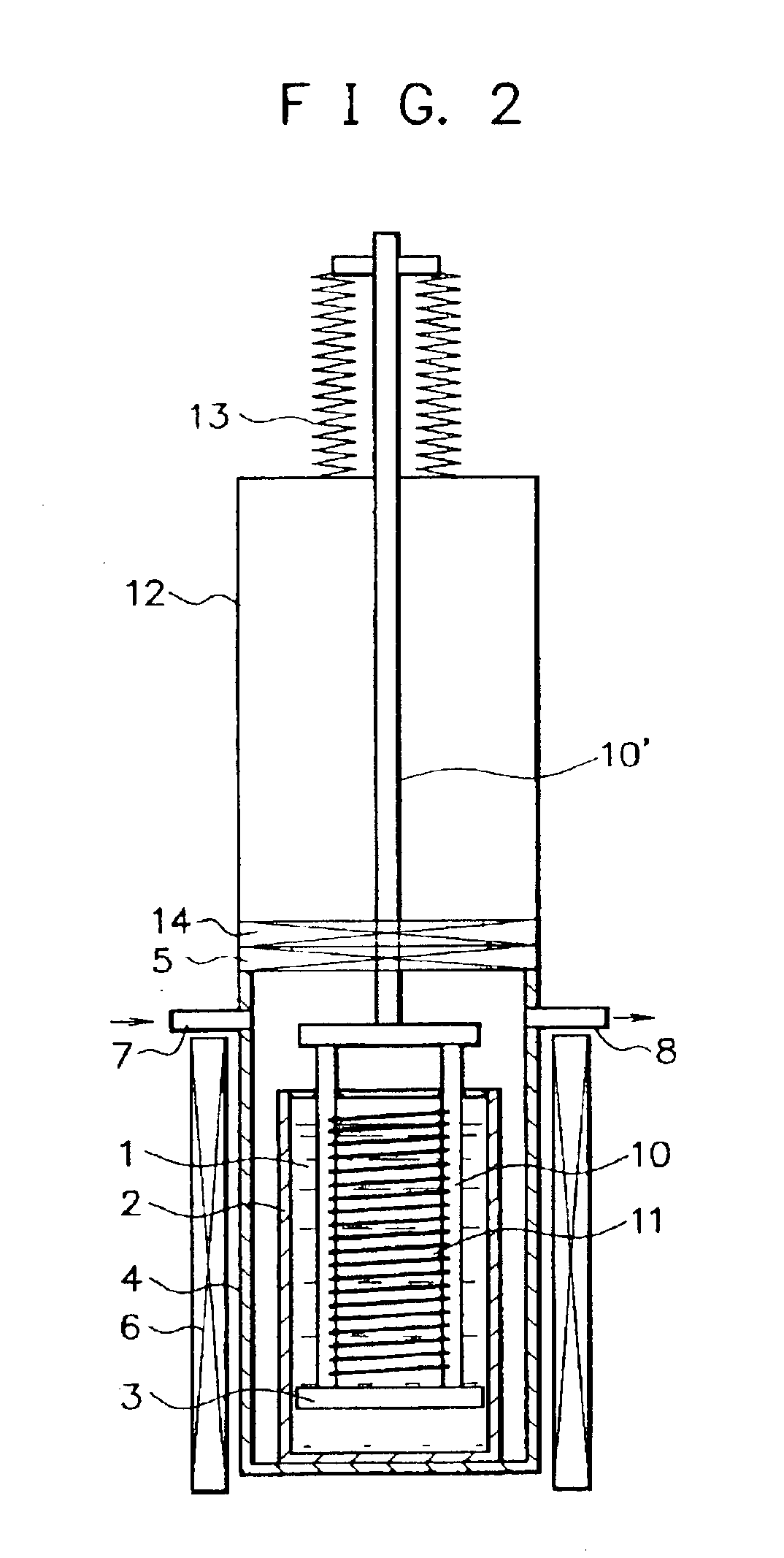Liquid-phase growth process and liquid-phase growth apparatus
a growth process and liquid-phase technology, applied in the direction of crystal growth process, chemistry apparatus and processes, polycrystalline material growth, etc., can solve the problem of difficult to grow a high-quality single crystal film on the substrate, difficult to prevent solvent vapor from going around to reach the substrate, and adverse effect of liquid-phase epitaxial growth on said substra
- Summary
- Abstract
- Description
- Claims
- Application Information
AI Technical Summary
Benefits of technology
Problems solved by technology
Method used
Image
Examples
example
This example describes a preferred embodiment of the liquid-phase growth process in the case of forming a silicon single crystal film using the liquid-phase growth apparatus shown in FIG. 2.
The inside of the growth chamber 4 is maintained with a hydrogen gas atmosphere.
A mixture comprising 11 kg of indium (In) and 1 Kg of gallium (Ga) is accommodated in the crucible 2 which is made of quartz and has an inner diameter of 180 mm. Then, 35 g of silicon (Si) is dissolved in the mixture accommodated in the crucible 2 at a temperature of 930° C. to obtain a saturated solution, followed by elevating the temperature of the saturated solution to a temperature of 923° C. to obtain a supersaturated solution as the solution 1.
On the liquid surface of the solution 1, a member made of quartz which has a diameter of 178 mm and a thickness of 5 mm as the capping member 3 is kept afloat.
In the substrate holder 10 positioned in the load lock chamber 12, a plurality of p+ silicon substrates having a d...
PUM
| Property | Measurement | Unit |
|---|---|---|
| temperature | aaaaa | aaaaa |
| inner diameter | aaaaa | aaaaa |
| temperature | aaaaa | aaaaa |
Abstract
Description
Claims
Application Information
 Login to View More
Login to View More - R&D
- Intellectual Property
- Life Sciences
- Materials
- Tech Scout
- Unparalleled Data Quality
- Higher Quality Content
- 60% Fewer Hallucinations
Browse by: Latest US Patents, China's latest patents, Technical Efficacy Thesaurus, Application Domain, Technology Topic, Popular Technical Reports.
© 2025 PatSnap. All rights reserved.Legal|Privacy policy|Modern Slavery Act Transparency Statement|Sitemap|About US| Contact US: help@patsnap.com



